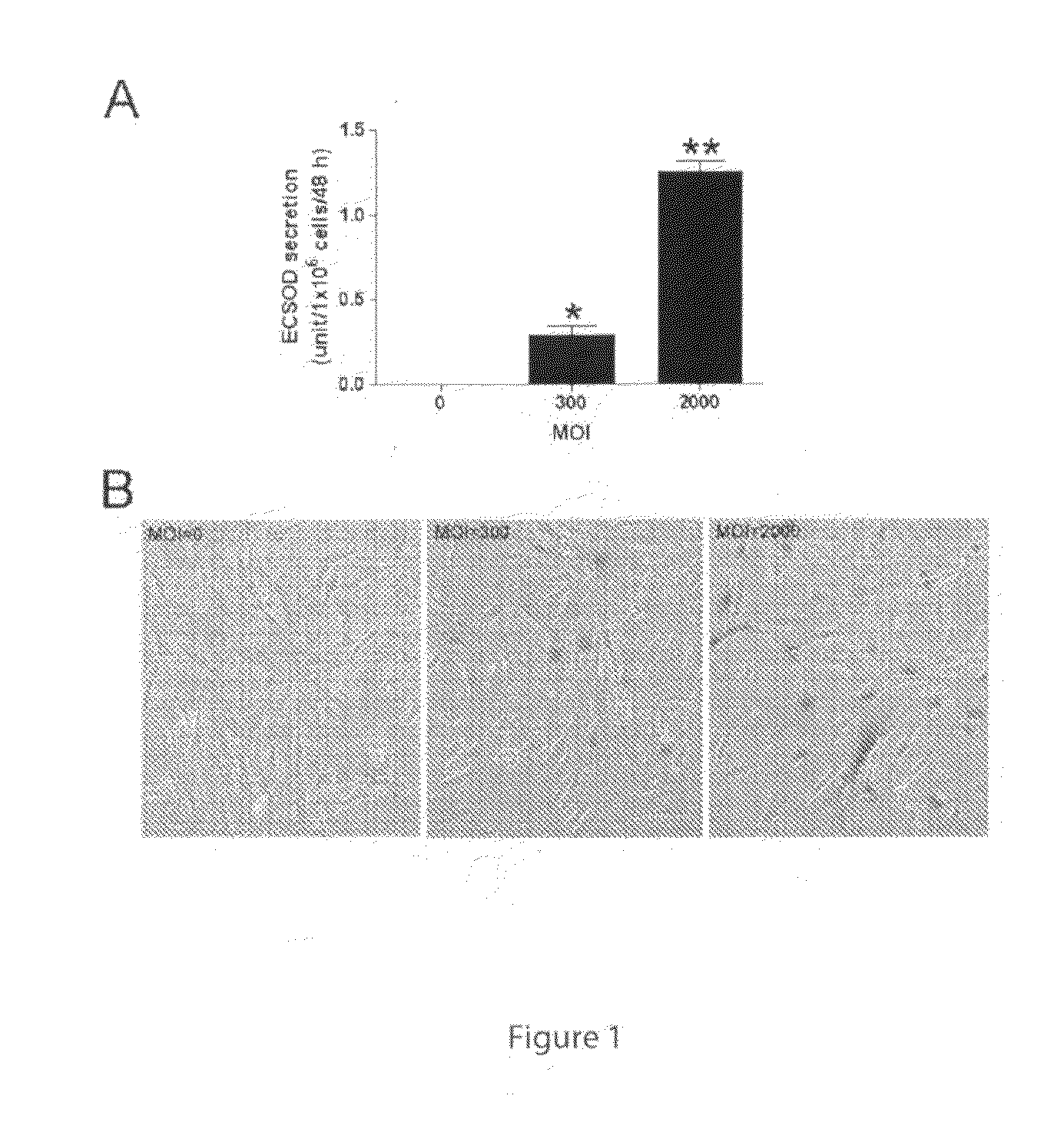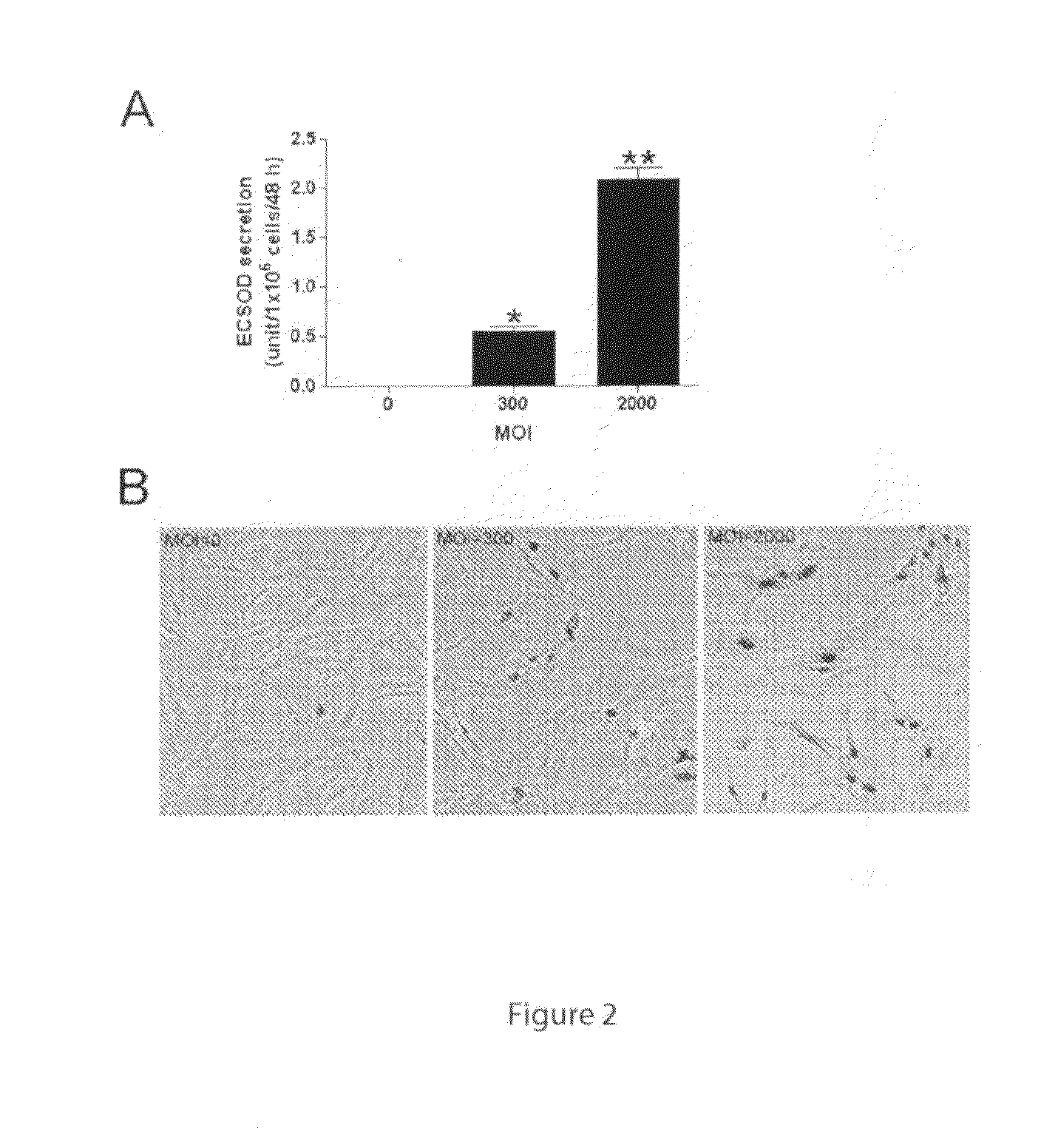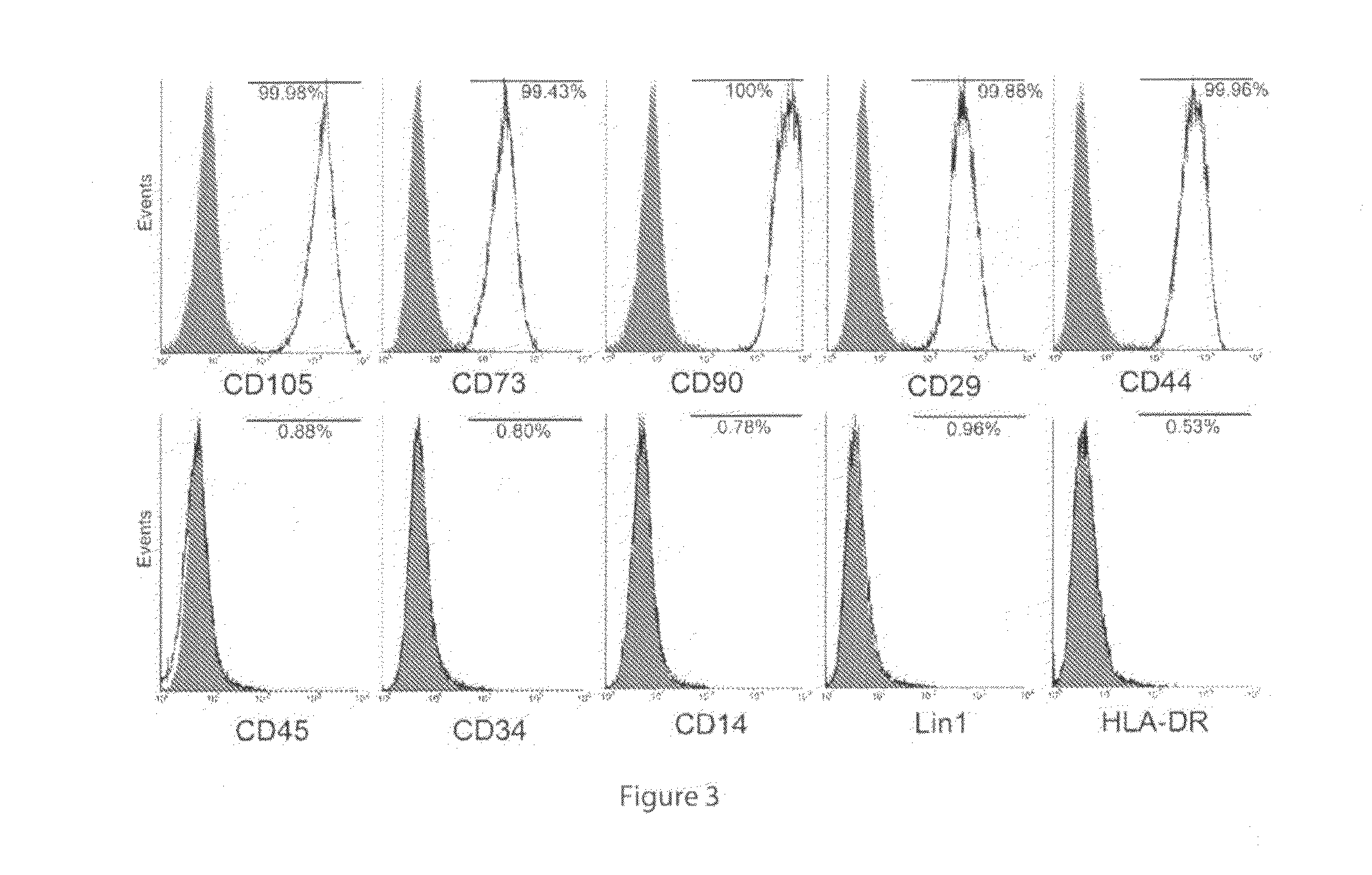Method for treating and preventing radiation damage using genetically modified mesenchymal stem cells
a technology of mesenchymal stem cells and genetically modified cells, applied in the field of radiation damage treatment, can solve the problems of increasing susceptibility to infection and bleeding, no ideal, safe synthetic radioprotectors are available to date, and preventing their use as a long-term prophylactic measur
- Summary
- Abstract
- Description
- Claims
- Application Information
AI Technical Summary
Benefits of technology
Problems solved by technology
Method used
Image
Examples
example 1
Materials and Methods
Adenoviral Vectors
[0098]The following two adenoviral vectors were used:
(1). Ad5CMVECSOD: a replication-deficient recombinant adenovirus carrying the human extracellular superoxide dismutase (ECSOD) gene under the control of cytomegalovirus (CMV) promoter (Chu et al. Circ Res. 92:461-8 [2003]).
(2). Ad5CMVntlacZ: a replication-deficient recombinant adenovirus carrying the nuclear-targeted β-galactosidase reporter gene ntlacZ under the control of CMV promoter (Chu et al. Circ Res. 92:461-8 [2003]).
[0099]Both adenoviral vectors were purchased from University of Iowa Gene Transfer Vector Core (Iowa City, Iowa).
Isolation and Ex Vivo Expansion of Mouse Mesenchymal Stem Cells (mMSCs)
[0100]mMSCs were isolated as previously described (Deng et al., Am J Physiol Cell Physiol 285:C1322-9 [2003]; Sun et al., Stem Cells. 21:527-35 [2003]; Peister et al. Blood 103:1662-8 [2004]; Bivalacqua et al. Am J Physiol Heart Circ Physiol. 292:H1278-90 [2007]; Abdel-Mageed et al., Blood 1...
example 2
[0148]Recently, mouse MSCs (mMSCs) were transduced with adenovirus containing ECSOD and the cells secreted biologically active ECSOD. To ascertain whether Ad5CMVECSOD can infect mMSCs and whether mMSCs genetically modified with ECSOD can secrete functional ECSOD, mMSCs were transduced with Ad5CMVECSOD at MOI 0, 300 or 2,000 for 48 hours. The cells were washed with PBS and further incubated for 48 hours. The culture supernatant was then collected and analyzed for SOD activity. A dose dependent secretion of biologically active ECSOD by Ad5CMVECSOD-transduced mMSCs was confirmed. The efficacy of adenoviral-mediated gene transfer into mMSCs was further examined using the reporting gene ntlacZ. To this end, mMSCs were transduced with Ad5CMVntlacZ at MOI 0, 300, or 2,000. After 48 hours, the expression of nuclear-targeted β-galactosidase in Ad5CMVntlacZ-transduced mMSCs was assessed by X-gal staining. Transduction efficiency of Ad5CMVntlacZ into mMSCs was proven to be dose-dependent. Ther...
PUM
| Property | Measurement | Unit |
|---|---|---|
| Therapeutic | aaaaa | aaaaa |
Abstract
Description
Claims
Application Information
 Login to View More
Login to View More - R&D
- Intellectual Property
- Life Sciences
- Materials
- Tech Scout
- Unparalleled Data Quality
- Higher Quality Content
- 60% Fewer Hallucinations
Browse by: Latest US Patents, China's latest patents, Technical Efficacy Thesaurus, Application Domain, Technology Topic, Popular Technical Reports.
© 2025 PatSnap. All rights reserved.Legal|Privacy policy|Modern Slavery Act Transparency Statement|Sitemap|About US| Contact US: help@patsnap.com



